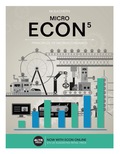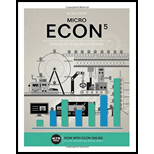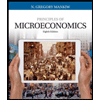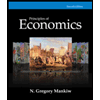
A
from the graph identify the equilibrium wage rate, the employment level, the
Concept Introduction:
Economic Rent: the extra amount earned by a resource (e.g. land, capital, or labor) by the quality of its current use
Opportunity Cost: the next best alternative forgone when making a decision between choices
Equilibrium wage rate: the intersection of
Demand for labor: this is a concept that defines the amount of demand for labor that an economy or firm is willing to employ at a given point of time.
B
the demand for labor, new equilibrium wage rate, employment level, Economic rent and opportunity cost in case there is an increase in the
Concept Introduction:
Economic Rent: the extra amount earned by a resource (e.g. land, capital, or labor) by the quality of its current use
Opportunity Cost: the next best alternative forgone when making a decision between choices
Equilibrium wage rate: the intersection of demand and supply of labor
Demand for labor: this is a concept that defines the amount of demand for labor that an economy or firm is willing to employ at a given point of time.
C
The effect on the demand for labor when demand for the final product decreases, the new equilibrium wage rate and employment level and to determine whether there is a change in the economic rent and opportunity cost
Concept Introduction:
Economic Rent: the extra amount earned by a resource (e.g. land, capital, or labor) by the quality of its current use
Opportunity Cost: the next best alternative forgone when making a decision between choices
Equilibrium wage rate: the intersection of demand and supply of labor
Demand for labor: this is a concept that defines the amount of demand for labor that an economy or firm is willing to employ at a given point of time.
Trending nowThis is a popular solution!

- Critically analyse the five (5) characteristics of Ubuntu and provide examples of how they apply to the National Health Insurance (NHI) in South Africa.arrow_forwardCritically analyse the five (5) characteristics of Ubuntu and provide examples of how they apply to the National Health Insurance (NHI) in South Africa.arrow_forwardOutline the nine (9) consumer rights as specified in the Consumer Rights Act in South Africa.arrow_forward
- In what ways could you show the attractiveness of Philippines in the form of videos/campaigns to foreign investors? Cite 10 examples.arrow_forwardExplain the following terms and provide an example for each term: • Corruption • Fraud • Briberyarrow_forwardIn what ways could you show the attractiveness of a country in the form of videos/campaigns?arrow_forward

 Principles of MicroeconomicsEconomicsISBN:9781305156050Author:N. Gregory MankiwPublisher:Cengage Learning
Principles of MicroeconomicsEconomicsISBN:9781305156050Author:N. Gregory MankiwPublisher:Cengage Learning Principles of Economics (MindTap Course List)EconomicsISBN:9781305585126Author:N. Gregory MankiwPublisher:Cengage Learning
Principles of Economics (MindTap Course List)EconomicsISBN:9781305585126Author:N. Gregory MankiwPublisher:Cengage Learning Principles of Microeconomics (MindTap Course List)EconomicsISBN:9781305971493Author:N. Gregory MankiwPublisher:Cengage Learning
Principles of Microeconomics (MindTap Course List)EconomicsISBN:9781305971493Author:N. Gregory MankiwPublisher:Cengage Learning Principles of Economics, 7th Edition (MindTap Cou...EconomicsISBN:9781285165875Author:N. Gregory MankiwPublisher:Cengage Learning
Principles of Economics, 7th Edition (MindTap Cou...EconomicsISBN:9781285165875Author:N. Gregory MankiwPublisher:Cengage Learning





